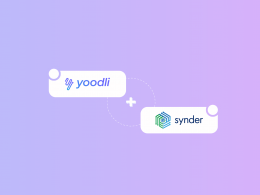E-commerce businesses operate using various platforms, from marketplaces and other sales channels to payment gateways. This complex model can create challenges in the back office processes and bookkeeping.
Today we want to explore accounting issues that e-commerce businesses with $1 mln – $100 mln revenue commonly deal with and offer a robust automation solution that directly address those pain points.
Bookkeeping challenges of e-commerce businesses
E-commerce businesses face challenges in managing financial data from various sources and have to deal with technical issues that may affect their accounting processes. For instance, frequent system shutdowns can disrupt the accounting team’s work, leading to delayed reporting and inaccurate financial records. If left unaddressed, such technical problems can compound the existing reporting challenges, making it even harder for e-commerce businesses to maintain their financial integrity. Let’s look at it more closely.
Complex bookkeeping and reconciliation
The first major issue of the multichannel model is the complexity of your bookkeeping. If you have thousands of transactions every month, which are spread over many platforms, recording all this data in your books and then reconciling it is time-consuming and error-prone, especially if done manually.
Now, instead of simply reconciling bank statement income, you may have to book sales with payment processing fees, sales taxes, taxes withheld by marketplaces, loans, paybacks, or gift card liabilities. This, in turn, creates more manual data entry, makes the reconciliation process lengthy, and during tax season, any mistake can have a very high cost.
Profitability assessment and COGS tracking
Having accurate financial records is a must for legal and tax reasons, but that’s not enough when it comes to proper bookkeeping. Using clear and transparent reporting, businesses can understand the income sources, expense structure, and as a result, profitability of the business. Tracking your sales accurately when you have thousands of sales is tricky, and what’s even more challenging in such a situation is tracking COGS across all channels. That requires a unified system that can work and analyze data from multiple sources, like e-commerce channels and payment gateways.
Accrual-based accounting
All of the above also reflects the need for accurate accrual-based accounting. Not only does using the accrual method become a necessity once your revenue reaches a certain point but in fact, only accrual accounting can give you an accurate picture of your current business. Having accurate information about your Receivables, Payables, and Liabilities allows for planning and forecasting. Cash-based reporting isn’t able to tell you much about how your business is doing.
Those bookkeeping issues associated with the multichannel model can lead to inaccurate and insufficient data on the one hand, and penalties and audits on the other. So let’s now turn to the solutions.
How Synder solves complex e-commerce bookkeeping problems
Synder is a single accounting solution that offers more than 25 integrations with common marketplaces (Amazon, Shopify, eBay, WooCommerce, Wix, etc), online payment processors (Stripe, PayPal, Square, Authorize.Net, Afterpay, etc), and POS systems (Shopify POS, Square POS, Clover POS). This allows for the unification of operations across all channels.
Daily summary for efficient bookkeeping
For e-commerce bookkeeping, Synder offers two modes of data reporting: the daily summary mode and per transaction mode. As the name suggests, daily summary posts a single daily Journal Entry with the summarized information of your sales for the day per platform. Synder will import all the data from the connected processors including refunds, disputes, fees, and payouts. For each daily entry, the tool will show taxes, taxes paid on behalf of the business (taxes withheld), payment processing, and other platform fees, gift cards, discounts, or tips.
On the other hand, the per transaction sync posts every transaction (invoice/sales receipt) to the books separately. This division lets businesses customize their books the way they want to. However, the more sales a business has, the harder it gets to track them on an individual level, so larger companies tend to use the summarized daily summary mode, which we will talk about further on.
Reconciliation with daily summary
The reconciliation is accurate and simple with daily journal posting. The software uses a clearing account in the books to reflect the balance of each payment processor. When the payout happens and the processor sends the money to the bank, the same amount is transferred from the clearing to the checking account for reconciliation. To reconcile, all you need is to confirm the automatic match under the bank feed. The balance of clearing accounts should always be very close to the balances of the connected integrations – this means that the integration is working properly.
If your e-commerce business is dealing with cash payments on top of the payment processors, those funds will also be properly allocated as Synder supports Shopify POS, Square POS, and Clover POS. The cash transactions are usually separated into different clearing accounts for easier reconciliation.
Clear profitability reports
To adequately see the profitability of your sales, Synder can ensure that your inventory is adequately reflected in Sales, COGS, and Assets Accounts. In this regard, Synder’s daily summary mode is perfect, as it has its own COGS tracking module. Once costs auto-sync or you upload the file with the costs for each product, Synder will calculate COGS based on the number of products sold throughout the day and update your books with the correct COGS for the day, while at the same time decreasing the Inventory Asset account.
Synder’s accounting system is able to deliver full information to your P&L Statement (with details like discounts, taxes, gift cards, etc.) and Balance Sheet making them perfect for analyzing the business health and sales profitability.
With detailed product mapping, Synder shows how much the business has earned for a sale of a specific product or a product group, while class breakdowns can reveal how much has been earned per platform. A wide range of customization leads to an enhanced understanding of each individual element of your operations per channel and across your entire business.
Synder for e-commerce: bottom line
Synder, as a provider of the largest number of e-commerce integrations, has the expertise and experience to solve the accounting problems of e-commerce businesses.
A single unified system that imports data from connected sales channels and payment platforms is undeniably a great solution for e-commerce. Customizable migration of data into your accounting system using smart rules, class divisions, or income categorization not only diminish the need for manual data entry but provide a fine-grained understanding of sales.
With automatic syncs, you get instant access to the most up-to-date reports. And whether you choose the daily summary mode or per transaction sync, you can be sure that all transactional data is recorded accurately according to the accrual-based method of accounting.
To find out how Synder can improve your bookkeeping and financial operations, book office hours or sign up for a free 15-day trial to experience the full range of Synder’s features.
The client-oriented approach at Synder means that on a daily basis we create new improvements and additional features for our clients to solve their unique accounting issues. So get in touch with our team to find out how we can help your business.






